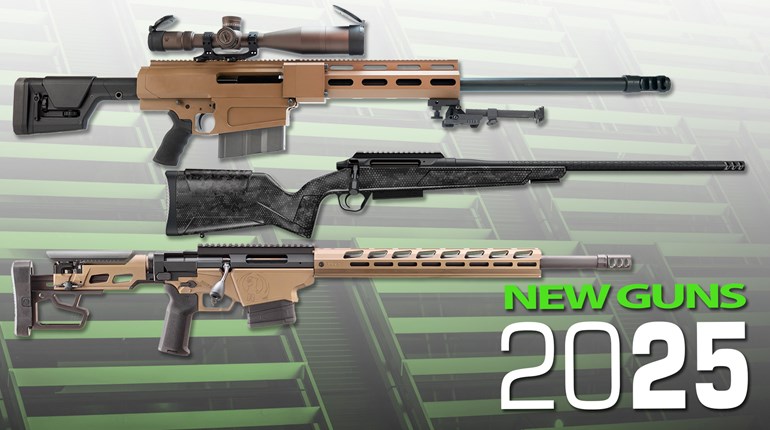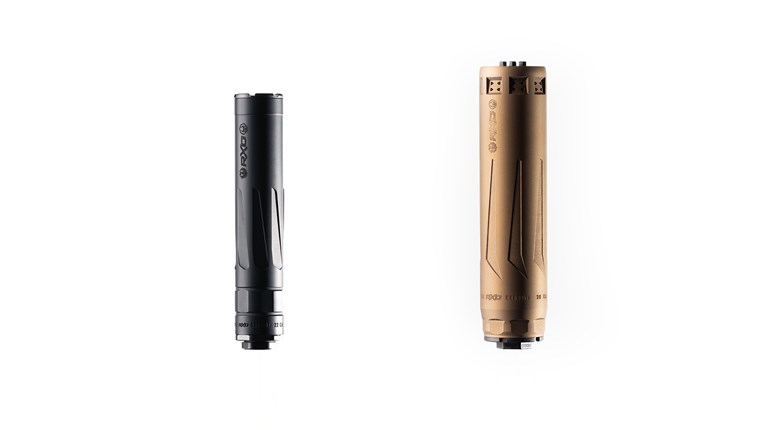
Modern day woodsmen may be versatile but they seem to like task-specific firearms, which is why manufacturers offer long guns specifically configured for different pursuits. Fact is, most hunters find versatility in their gun safes. But if you're going to have only one rifle, it had better be versatile. Versatility is the basic concept behind the scout rifle as originally conceived by Gunsite founder Jeff Cooper.
There've been several commercial attempts at Cooper's scout rifle. He put his name on one from Steyr, Savage has the model 10 FCM Scout and for a while Ruger offered the Model 77 Frontier Scout. One could argue Marlin's Model 1895SBL with its XS Sights Lever Rail is a scout rifle of sorts. Regardless, Cooper's primary definition of a scout rifle was that it had to be a general-purpose rifle that could be used for hunting and defense.
Cooper defined a general-purpose rifle as a "... conveniently portable, individually operated firearm, capable of striking a decisive blow, on a live target of up to 200 kilos [440 pounds] in weight, at any distance at which the operator can shoot with the precision necessary to place a shot in the vital area of the target."
Inclusion of the "operator" in this definition opens the door for individual interpretation since we are all different in physical makeup, needs and skills. Cooper had his own analysis. He was a proponent of the intermediate eye-relief scope and a back-up aperture sight, and he believed the general-purpose rifle should be a bolt-action of about a meter in length and weigh about 6.6 pounds. Ruger worked with the current Gunsite cadre to develop its version of Cooper's ideal scout rifle.
A scout rifle has always been considered a sort of pseudo-military firearm—a rifle ready for the battlefield or one kept in the closet in case you're caught up in something like Katrina. But the concept has application for hunters too, if only for its versatility and one-gun appeal. The old adage goes, "Beware the man with one rifle, he probably knows how to shoot it."
The Ruger Gunsite Scout rifle has a laminated wood stock with front and rear sling swivel studs and a length of pull that is adjustable from 12.75 to 14.25 inches. Three half-inch spacers that can be inserted between the butt-pad and stock facilitate this customization. Rifle fit has a great deal to do with accurate shooting, and the Gunsite Scout Rifle can be configured for large, medium and even smallish adults. At the shortest length-of-pull setting, the rifle fit my 11-year-old son perfectly.
Ruger uses its proven Model 77 action for the Gunsite Scout. It's a rugged, dependable action even if it is, out of the box, a little of what I call "Ruger rough." (Cycle the action several hundred times and you'll find the smoothness you're looking for.) Ruger opted for a one-piece synthetic trigger guard and bottom piece as opposed to its customary hinged floorplate. The Gunsite Scout rifle feeds from a five- or 10-round detachable magazine. Like all Rugers, it accepts the company's own steel rings but the rear ring platform is drilled for a fully adjustable aperture sight. It can be detached by removing a single hex-head screw. This provides the option of a back-up sight in case of an optical failure.
Sighting versatility does not stop there. The 16.5-inch, hammer-forged barrel is contoured to accept a 6-inch Picatinny rail, attached just forward of the action with four hex-head screws. This rail permits the mounting of either a scout-style, extended eye-relief scope or a red dot sight. One of my best shots afield was made near the Limpopo River in South Africa using a scout scope-sighted rifle to whack a running warthog. Shooting situations like these highlight the advantages of a low-power, extended eye-relief scope that allows you to keep both eyes open.
A military-looking muzzle brake caps the barrel's end and brings the rifle's overall length to between 38 and 39.5 inches, depending on where the length of pull is set. The brake may seem a bit hokey on a hunting rifle, but the threaded muzzle means it can be removed. This should appeal to those who like to hunt with a suppressor in states where legal. Regardless, the brake does protect the muzzle's crown from impact with rocks and such. If you fall down as much as I do when hunting it's a plus.
It would be hard to argue against the Gunsite Scout Rifle's serviceability as an end-of-days rifle, but is it a real hunting rifle? The short answer is obviously yes; you can hunt with any rifle. The question for the average hunter: Why choose a Gunsite Scout Rifle over a more conventional, bolt-action sporter?
To answer this we must go back to the individuality Cooper referenced in his general-purpose rifle definition. What size and weight firearm are you comfortable carrying? The Gunsite Scout Rifle weighs in at 7 pounds without a scope. It's not a featherweight but it won't kick like a featherweight either. It's also short. When stalking, I'll often carry a rifle by its wrist in my shooting hand and intermittingly glass with my off hand. The Gunsite Scout is short enough to allow this, and the muzzle does not drag the ground. If you're shorter than 5-foot-10 this won't work for you.
Shooting ability and hunting style fit into the equation too. The Gunsite Scout was not a tack-driver with the factory hunting loads tested. However, it shot consistent sub-inch groups with one of my favorite 155-grain Berger VLD handloads. All loads tested are sufficient for big-game hunting out to around 300 yards. If you can consistently shoot farther, and expect to do so when hunting, you're working outside the realm of a general-purpose rifle or the Ruger Scout. However, after hunting on four continents for a variety of big game, I can count the shots I've had to take beyond 300 yards on one hand. For most hunters—including me—a 300-yard rifle is more than sufficient, especially from field-shooting positions.
What you have with the Ruger Gunsite Scout is a versatile, compact rifle that can be configured to fit a wide range of shooters with an assortment of sighting implements. With quick-release scope rings, you can even swap sights in the field. It is, by definition, a general-purpose rifle. It's suitable for hunting deer or black bear in the tangle of a clear-cut, the dark of the deep forest or even across your neighbor's pasture. It would also serve well on an African plains-game hunt where you might have to dig a bushbuck out of a river bottom or smack an impala out on the plain.
Finally, how many hunting rifles do you want to own and, more importantly, learn to use? I'm not a one-gun kind of guy and don't plan to become one. My father was, though; he shot his iron-sighted deer rifle like the old adage prophesizes. On the other hand, I have and always will appreciate tools that work for a wide range of chores. Like a hammer—if dad taught me nothing else it's that you can use a hammer to solve a plethora of problems. The Ruger Gunsite Scout is kind of like a hammer; always useful, forever rugged and just plain versatile.
Specs:
603-863-3300, ruger.com
Type: bolt-action centerfire rifle
Caliber: .308 Win.
Barrel: 16.5"; cold-hammer-forged alloy steel; 1:10" twist
Trigger: LC6; pull weight, 4.25 lbs. (as tested)
Magazine: detachable steel box; 5- or 10-round capacity
Sights: adjustable, removable rear aperture, fixed post front; forward-mounted Picatinny rail
Safety: three-position wing
Stock: laminated hardwood; LOP, adjustable from 12.75"-14.25"
Overall Length: 38"-39.5"
Weight: 7 lbs.
Metal Finish: stainless steel
Accessories: butt-pad spacers; Ruger integral-base scope rings
MSRP: $995 (scope not included)



































